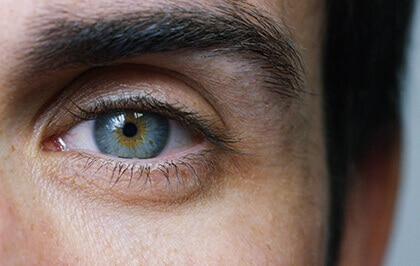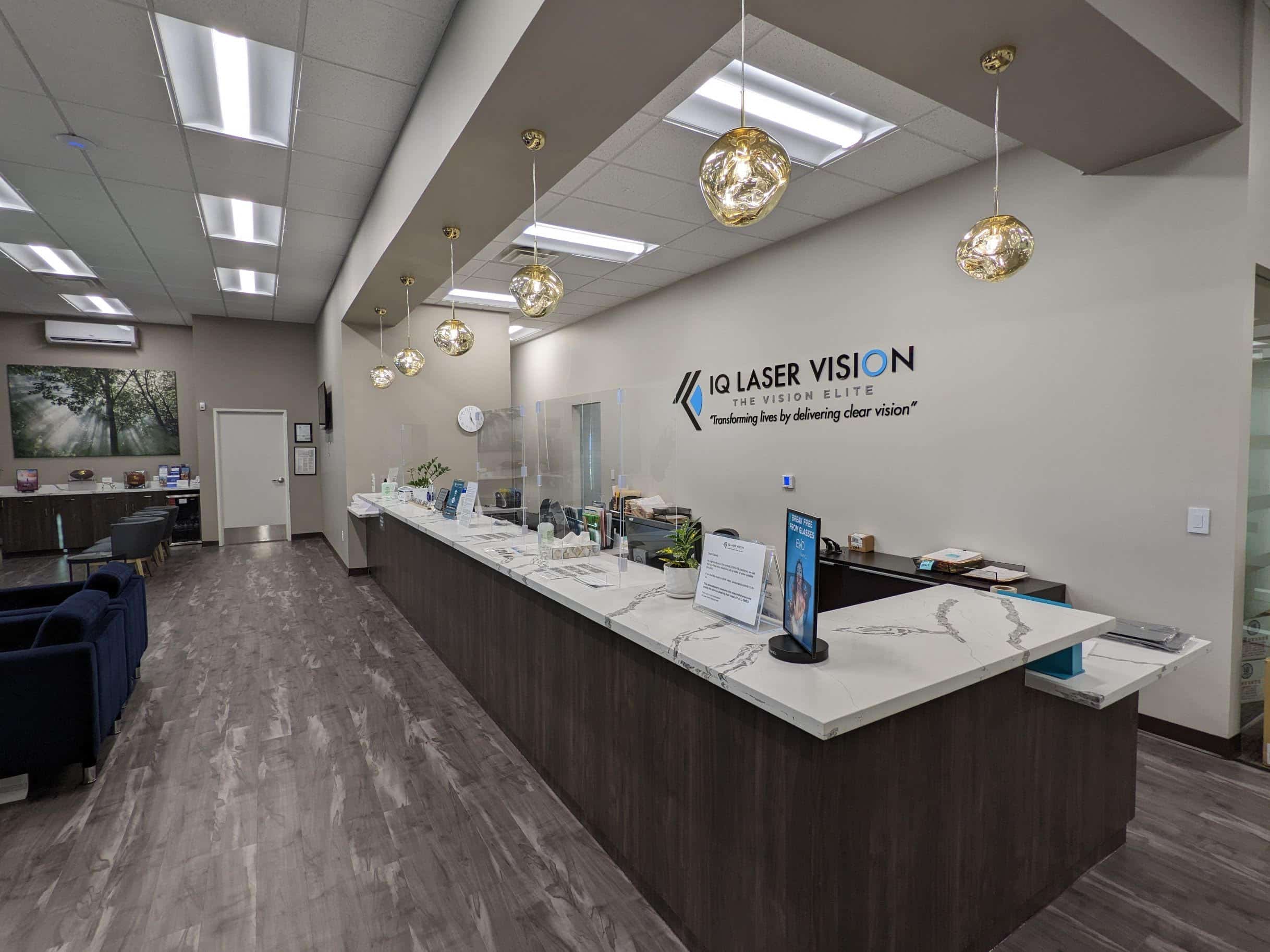
Have you noticed a growth in the corner of your eye? Perhaps it’s causing you irritation or difficulties with your vision. Whether diagnosed or not, it sounds like a pinguecula or pterygium. With the exact cause unknown, it can develop at any time. But rest assured that when it does, we are here to help.
Welcome to IQ Laser Vision, the home of specialists in eye surgery. With over 60 years of cumulative experience, you can rely on us for high-quality treatments and long-lasting results. And when it comes to pterygium removal, we are no strangers to the procedure. We’ve performed over 300,000 treatments in total at the clinic in California, and with many of these being pterygium surgery, you can rest assured that you are safe in our capable hands.
What is Pterygium?
Pterygium is a growth of the conjunctiva. These growths develop onto the cornea. The conjunctiva is the clear tissue that covers the sclera. The sclera is the white part of the eye. It also lines inside your eyelids.
Ophthalmologists don’t know the exact reason that pterygium develops. Many often associate them with excessive exposure to wind, time spent in the sun without protection from UV rays, or sand.
When the conjunctiva first starts to get thicker, it is a pinguecula. The size of a pinguecula can vary. In some cases, it spreads to the cornea and may affect your vision. Once a pinguecula spreads to the cornea and affects your vision, it is no longer a pinguecula. When this happens, it is now considered pterygium and you’ll need to have it removed.
Pterygium can cause redness, tearing, itching, swelling, and irritation, as well as obstruct your vision.
According to Pterygium: prevalence, demography and risk factors, “Pterygium occurs in about 10-15% of Americans in the United States.”
Accessible and Affordable Pterygium Removal for All
You can’t put a price on your quality of life. If your life is starting to be affected by your pterygium then it is time to speak to the experts. In a single, pain-free procedure your pterygium can be removed. Then, within as little as two weeks you will notice your eye’s appearance returning to normal. It’s that easy. Minimally invasive, you won’t need stitches, and you won’t need to take more than a couple of days off work. Simply apply the antibiotic and anti-inflammatory drops given to you by your doctor and your eye will heal seamlessly in no time. In addition to pterygium surgery, we also specialize in LRI (Limbal Relaxing Incisions), a procedure designed to correct astigmatism and enhance your vision.
We believe that eye health and good vision should be accessible for all which is why we offer affordable treatments. If your vision is obstructed, then your insurance could cover you for the procedure. Our team may check with your insurance carrier to identify your level of coverage before treatment. And if you are not covered by your insurance, we offer finance options to suit you. For more information, speak to our experts at your initial consultation.
How Does Pterygium Excision Work
If you have pterygium, you can have it removed with five easy steps.
Step 1: Before excision begins, you’ll have numbing eye drops applied to your eye. This prevents you from feeling any pain. Your eye is also held open during the excision to prevent you from blinking.
Step 2: Pterygia is removed, clearing up the cornea and removing any obstructions from your vision.
Step 3: The area where the pterygia is located is filled with transplanted tissue. This tissue is from the conjunctiva. It’s painlessly removed using a no-stitches auto-graft self-transplant technique.
Step 4: Your eye will be covered with a patch overnight.
Step 5: Your eye doctor will instruct you on how to apply topical antibiotic and anti-inflammatory drops and/or ointment. Your eye will slowly start to return to looking like it normally does over the next 2-3 weeks.
What are the Benefits of Pterygium Excision?
Although you can have pterygia removed for cosmetic reasons, most patients have them removed if their vision is being obstructed. Removing pterygia can also help if you are experiencing any discomfort.
Even if you aren’t experiencing discomfort or vision obstruction, many people choose removal because they are self-conscious. Pterygia and pinguecula can be yellow in color as they grow. This makes them quite noticeable on the whites of the eye.
Removing them only for cosmetic reasons can have a significant benefit. This includes an increase in self-confidence and your ability to interact with others.
Functionally, excision removes the growth from the cornea and provides you with freedom and clearer vision. Pterygium growth on the cornea can also potentially obscure the optical center of the cornea. This can cause more serious problems like inducing astigmatism or corneal scarring.
Using the autograft technique leads to a much shorter procedure time. It also reduces how long it takes you to heal and reduces your chances of having pterygium recur later.
Who is a Candidate for Pterygium Excision?

Good candidates for pterygium excision must be at least 18 years of age or older and in good health.
There may be times when IQ Laser Vision may need to turn away patients who do not qualify for the procedure. Our number one concern is not about the number of patients we bring in but the quality of care and high level of service we can provide.
That is why it is important to come in for our free consultation. This allows one of the eye doctors at IQ Laser Vision to determine your candidacy and provide the best vision correction options for you.
What Can You Expect After The Procedure?
After the procedure, medical therapy consists of over-the-counter lubricating eye drops, anti-inflammatory drops, and preservative-free ointments. You may experience minor discomfort after the procedure. This will usually go away after a few days. Most patients can resume full activity within 48 hours of having the procedure. It can take 2-3 weeks before your eye will return to looking like it normally does after the procedure.
If you’re at a higher risk for pterygium, you want to wear a wide-brimmed hat, as well as UV-blocking glasses or sunglasses when outdoors. This will help protect your eyes from the sunlight.
What are the Risks of Pterygium Excision?
Because the exact cause of pterygium is not known, you may have another pterygium occur even after removal.
Other risks may include the following:
- Redness
- Irritation
- Scarring of the conjunctiva or cornea
If you have certain medical conditions, these may increase your risks, including:
- Glaucoma
- Thyroid disease
- High Blood Pressure
Any risks will be discussed thoroughly with you before, during, and after your procedure. At IQ Laser Vision, we are dedicated to answering all questions you may have. We want to make sure you are both comfortable and have realistic expectations before having the procedure.
Enquire About Pterygium Laser Surgery Today
Regardless of whether your pterygium is affecting your vision or not, we want to hear from you. Many of our clients don’t find their vision is impacted at all, they just feel self-conscious about the appearance of their pterygium and their eye. So whether it is affecting your vision, your confidence, or both, it’s time to get in touch. In a quick and pain-free procedure, we will restore your eye to its normal appearance. We also offer cataract surgery in Southern California, ensuring that all of your eye care needs are met under one roof.
If you are aged over 18 and generally in good health, then you are a great candidate for our pterygium surgeon to work his magic. Book a free consultation with our friendly team to understand how the procedure could benefit you. If you’re not a candidate for LASIK or pterygium laser surgery, you may want to consider EVO ICL surgery, another advanced option we offer to correct vision issues.
So what are you waiting for? Get started today by completing our online inquiry form or calling our experts at 888-539-2211. Don’t suffer with your pterygium when it can be removed in a quick, pain-free procedure. We look forward to hearing from you soon.
FAQs About Pterygium
Concerned that you may have a pterygium that’s obstructing your field of vision? Schedule an appointment at IQ Laser Vision in Los Angeles, CA, and other convenient locations today!

This content has been reviewed and approved
Dr. Mattioli had LASIK himself over 22 years ago and has been practicing in Houston since 2001, caring for and treating local and international patients. He has personally treated several Wounded Warriors.
Dr. Mattioli is board-certified by the American Board of Physician Specialties in Ophthalmology. He has performed hundreds of cataract/implant procedures, and 65,000+ laser SMILE, LASIK, and PRK. Additionally, he performs specialized procedures including EVO ICL for myopia and astigmatism, as well as Intacs and crosslinking for keratoconus.























